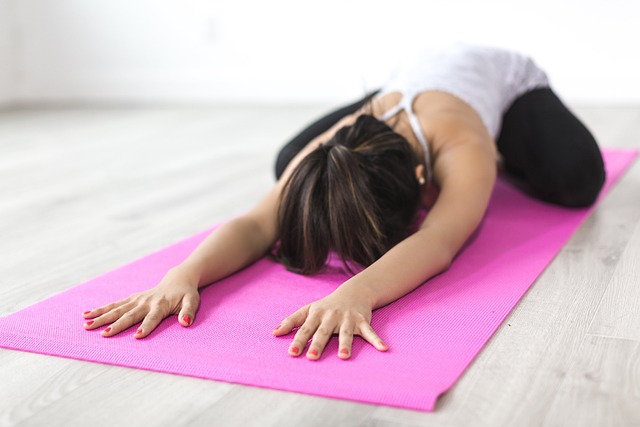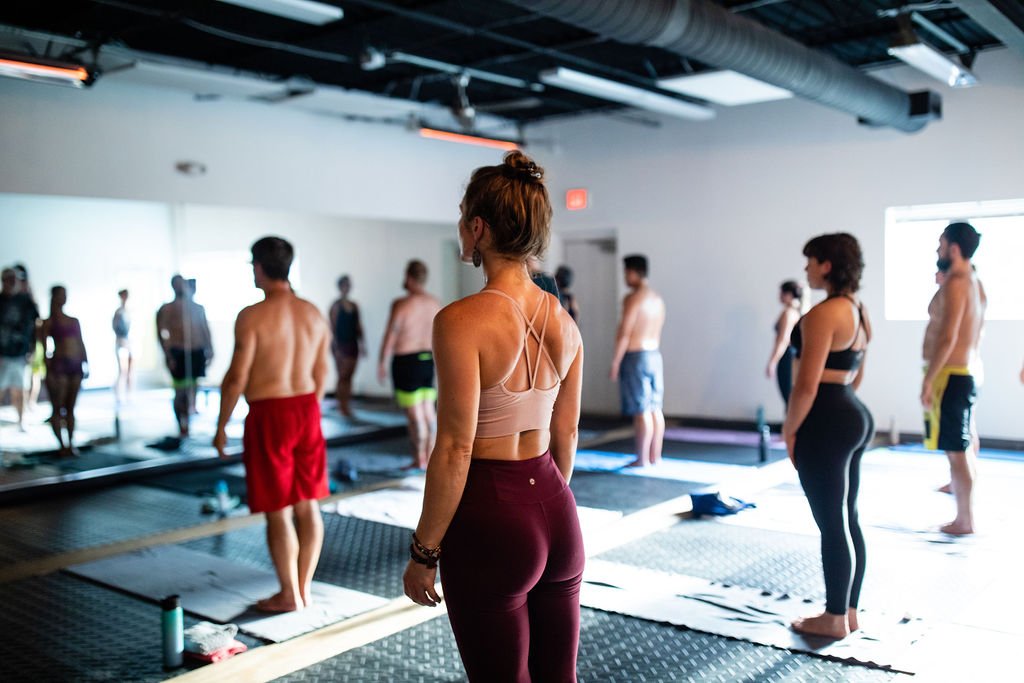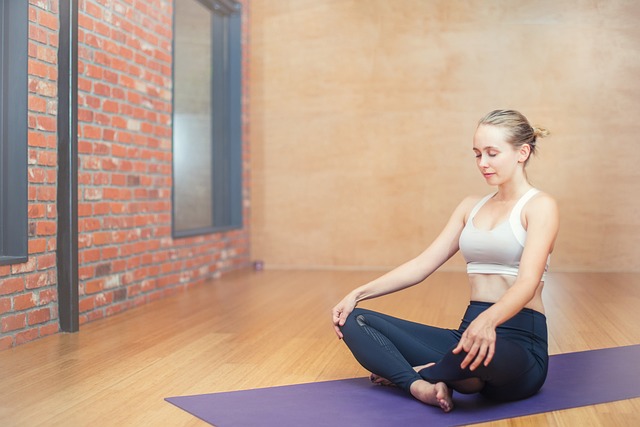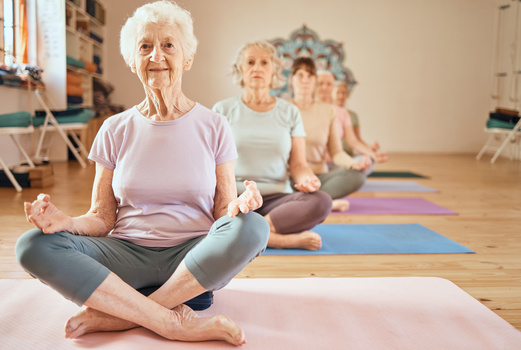
Chronic pain can be debilitating, affecting every aspect of a person's life. However, there is hope in the form of yoga and mindfulness practices.
In this article, we will explore eight evidence-based ways that these practices can alleviate chronic pain. From the power of present moment awareness to the transformative effects of acceptance and body scanning, we will delve into the techniques that offer relief and promote mental clarity.
Discover how these practices can bring freedom from chronic pain and enhance overall well-being.
Present Moment Awareness
Present moment awareness is a critical aspect of yoga and mindfulness practices, as it involves fully engaging with the current experience without judgment or attachment. This state of mindfulness allows individuals to cultivate a heightened sense of awareness and presence, enabling them to connect with their bodies, thoughts, and emotions in a non-reactive and non-judgmental manner.
Mindfulness exercises and techniques, such as breath awareness, body scans, and mindful movement, are used to anchor attention to the present moment and develop a deeper understanding of one's physical and mental state.
Body Scan
The body scan is a mindfulness technique that involves systematically directing attention to different parts of the body.
It has been found to have numerous benefits in alleviating chronic pain. Research suggests that the body scan can help individuals increase their awareness of bodily sensations, reduce pain intensity, and promote relaxation.

Benefits of Body Scan
Body Scan is a mindfulness technique that provides numerous benefits in alleviating chronic pain. It involves systematically scanning and paying attention to different parts of the body, bringing a heightened sense of body awareness. By focusing on the physical sensations and emotions that arise during the body scan, individuals can develop a greater understanding of their pain and learn to accept it without judgment.
Research has shown that body scan meditation can be effective in reducing chronic pain and improving overall well-being. It helps individuals tune into their bodies, allowing them to identify areas of tension or discomfort. This increased body awareness can lead to better self-care and the ability to respond to pain in a more compassionate and effective manner.
Additionally, the body scan has been found to be a helpful tool in stress reduction. By directing attention to different body parts, individuals can bring relaxation and release tension, promoting a sense of calmness and relaxation. This can be particularly beneficial for individuals experiencing chronic pain, as stress can often exacerbate pain symptoms.
Incorporating body scan into a mindfulness practice can provide individuals with a powerful tool for managing chronic pain. By cultivating body awareness and reducing stress, individuals can experience a greater sense of freedom and empowerment in their journey towards pain relief.
Techniques for Body Scanning
One effective approach to incorporating body scanning into a mindfulness practice involves utilizing specific techniques. These techniques allow individuals to deepen their mind-body connection and enhance their pain management techniques.
Here are four techniques for body scanning that can be beneficial in alleviating chronic pain:
- Progressive Muscle Relaxation (PMR): This technique involves systematically tensing and releasing each muscle group in the body, promoting relaxation and reducing muscle tension.
- Breath Awareness: By focusing on the breath during the body scan, individuals can bring their attention to the present moment, calming the mind and reducing stress.
- Sensory Awareness: This technique involves bringing attention to the different sensations in the body, such as warmth, tingling, or tension, allowing individuals to develop a greater awareness of their physical experiences.
- Non-Judgmental Observation: Through non-judgmental observation, individuals can cultivate an attitude of acceptance and curiosity towards their bodily sensations, fostering a compassionate and healing mindset.
Non-judgmental Observation
Mindfulness practice involves adopting a non-judgmental attitude towards one's own experiences. This approach allows individuals to observe their thoughts, emotions, and sensations without labeling them as good or bad. By cultivating non-judgmental observation, individuals can develop a greater sense of self-compassion and acceptance.

When practicing mindfulness, it is common for thoughts and judgments to arise. However, rather than getting caught up in these judgments, mindfulness encourages individuals to simply acknowledge them and let them pass without attaching any significance to them. This non-judgmental attitude allows individuals to free themselves from the cycle of self-criticism and self-judgment, promoting a greater sense of freedom and self-acceptance.
Research has shown that non-judgmental observation can have numerous benefits for individuals experiencing chronic pain. By observing pain sensations without judgment, individuals can reduce their resistance to pain, which often exacerbates suffering. This non-judgmental approach also allows individuals to develop a more compassionate and gentle attitude towards themselves, fostering healing and well-being.
Incorporating non-judgmental observation into mindfulness practice can be transformative for individuals seeking relief from chronic pain. By cultivating self-compassion and adopting a non-judgmental attitude, individuals can find freedom from the constraints of their pain and embrace a more accepting and peaceful way of being.
Acceptance
Acceptance plays a crucial role in alleviating chronic pain through yoga and mindfulness practices.
By embracing physical limitations, individuals can let go of resistance and find inner peace.
Acceptance allows individuals to acknowledge their pain without judgment, fostering a compassionate and non-reactive attitude towards their condition.
Embracing Physical Limitations
The practice of yoga and mindfulness encourages individuals to embrace and accept their physical limitations. By cultivating a strong mind-body connection, individuals can develop a deeper understanding and acceptance of their bodies' capabilities and limitations. This acceptance allows them to approach their practice with self-compassion and without judgment. Here are four ways in which embracing physical limitations can lead to freedom:

- Increased self-awareness: Embracing physical limitations helps individuals become more attuned to their bodies and recognize their boundaries.
- Mindful modifications: Embracing physical limitations allows individuals to modify their practice to suit their unique needs, fostering a sense of empowerment and ownership over their bodies.
- Injury prevention: Embracing physical limitations enables individuals to listen to their bodies' signals and avoid pushing themselves beyond what is safe and healthy.
- Cultivating gratitude: Embracing physical limitations encourages individuals to appreciate their bodies' abilities and be grateful for what they can do, rather than focusing on what they cannot.
Letting Go of Resistance
By embracing their physical limitations, individuals can learn to let go of resistance and cultivate a deeper sense of acceptance in their yoga and mindfulness practice.
Letting go of resistance involves releasing the tendency to fight against pain or discomfort, and instead, allowing oneself to fully experience and accept the present moment as it is.
This practice of acceptance is not about resigning oneself to a life of suffering, but rather, it is a powerful tool for finding freedom from the grip of chronic pain.
Research has shown that individuals who practice acceptance in their yoga and mindfulness practice experience reduced pain intensity, improved emotional well-being, and increased overall quality of life.
Finding Inner Peace
Through the practice of embracing physical limitations, individuals can cultivate a deeper sense of acceptance and find inner peace in their yoga and mindfulness journey. This journey of self-discovery allows individuals to let go of resistance and surrender to the present moment.
Mindfulness practices play a crucial role in this process by helping individuals become aware of their thoughts and emotions without judgment. By accepting their physical limitations, individuals can release the need for control and perfectionism, and instead, embrace their bodies as they are. This acceptance creates a sense of inner peace, as individuals no longer struggle against their limitations but learn to work with them.
Through mindfulness practices such as meditation and body scans, individuals can tap into their inner wisdom and find solace in the present moment, free from the burdens of the past or worries about the future.

Letting Go
Practicing yoga and mindfulness aids in the process of releasing tension and resistance within the body and mind. Letting go and surrendering resistance are essential aspects of this practice, allowing individuals to experience a sense of freedom and liberation.
By letting go, we release attachment to negative thoughts, emotions, and physical sensations that contribute to chronic pain. Through mindfulness techniques such as body scans and breath focus, we become aware of these sensations without judgment, creating space for acceptance and healing.
Numerous studies have shown the efficacy of yoga and mindfulness in reducing chronic pain and improving overall well-being. By surrendering resistance and embracing the present moment, individuals can cultivate a deeper connection with their bodies, allowing for greater physical and emotional release.
This process of letting go is an integral part of the journey towards freedom from chronic pain and finding inner peace.
Breath Focus
Utilizing breath focus enhances the practice of yoga and mindfulness, providing individuals with a powerful tool to cultivate present moment awareness and alleviate chronic pain. By incorporating breath control and breath awareness techniques, individuals can tap into the transformative power of the breath.
Here are four ways that breath focus can bring freedom and relief to those experiencing chronic pain:
- Deep breathing: By taking slow, deep breaths, individuals can activate the body's relaxation response, reducing stress and tension in the muscles.
- Mindful breathing: Bringing awareness to the breath in each moment helps individuals stay grounded in the present, allowing them to let go of worries and anxieties about the past or future.
- Diaphragmatic breathing: By engaging the diaphragm, individuals can increase oxygen flow to the body, promoting relaxation and reducing pain sensations.
- Breath visualization: Imagining the breath flowing through the body can help individuals direct healing energy to specific areas of pain, promoting relief and healing.
Relaxation
Relaxation plays a crucial role in the practice of yoga and mindfulness. It allows individuals to release tension and promote healing in their journey towards managing chronic pain.

Deep breathing is an essential technique used to induce relaxation. It activates the body's relaxation response and reduces stress levels. By consciously focusing on the breath, individuals can bring their attention to the present moment, calming the mind and creating a sense of peace and tranquility.
This deep breathing technique also helps in increasing oxygen flow to the muscles. It promotes relaxation and improves overall well-being.
Moreover, relaxation techniques such as progressive muscle relaxation and guided imagery can provide stress relief and further enhance the benefits of yoga and mindfulness.
Mental Clarity
One pathway to achieving mental clarity in the context of managing chronic pain through yoga and mindfulness is by cultivating a deep connection between the mind and body. By developing a strong mind-body connection, individuals can better understand and interpret the signals their body is sending, leading to improved self-awareness and mental clarity.
This connection allows individuals to recognize the impact of stress on their physical and mental well-being, and empowers them to take proactive steps to reduce stress levels. Through the practice of yoga and mindfulness, individuals can learn techniques such as deep breathing, meditation, and body scans, which have been shown to activate the relaxation response and reduce stress.
This ultimately leads to improved mental clarity, as individuals are able to focus their attention and energy on the present moment, rather than being consumed by pain and stress.
Frequently Asked Questions
How Long Does It Typically Take to See Results in Pain Reduction When Practicing Yoga and Mindfulness Techniques?
It typically takes time to see results in pain reduction when practicing yoga and mindfulness techniques for chronic pain. Recommended practices include acceptance, body scan, breath focus, and more. Results vary for each individual.

Can Yoga and Mindfulness Completely Eliminate Chronic Pain?
While yoga and mindfulness can provide long-term relief and serve as alternative treatments for chronic pain, it is important to note that complete elimination of pain may not always be possible. However, these practices can significantly improve quality of life and reduce pain levels.
Are There Any Specific Yoga Poses or Mindfulness Exercises That Are Particularly Effective for Alleviating Chronic Pain?
Specific yoga poses and mindfulness exercises can be particularly effective in alleviating chronic pain. These practices offer recommendations and benefits for individuals seeking relief, promoting a sense of freedom through their ability to target and address pain.
Yoga and mindfulness can be used as a standalone treatment for chronic pain, but they can also be used in conjunction with other forms of therapy or medication. Their effectiveness depends on individual circumstances and preferences.
Are There Any Potential Risks or Side Effects Associated With Practicing Yoga and Mindfulness for Chronic Pain Relief?
Practicing yoga and mindfulness for chronic pain relief may have potential risks and side effects. It is important to consider individual health conditions, injuries, and limitations, as well as consult with a healthcare professional to ensure safe and effective practice.
 Business & FinanceHealth & MedicineTechnologyLifestyle & CultureScience & EnvironmentWorld NewsPrivacy PolicyTerms And Conditions
Business & FinanceHealth & MedicineTechnologyLifestyle & CultureScience & EnvironmentWorld NewsPrivacy PolicyTerms And Conditions
